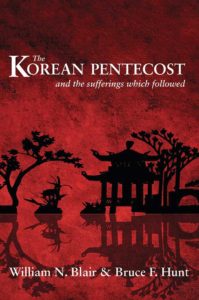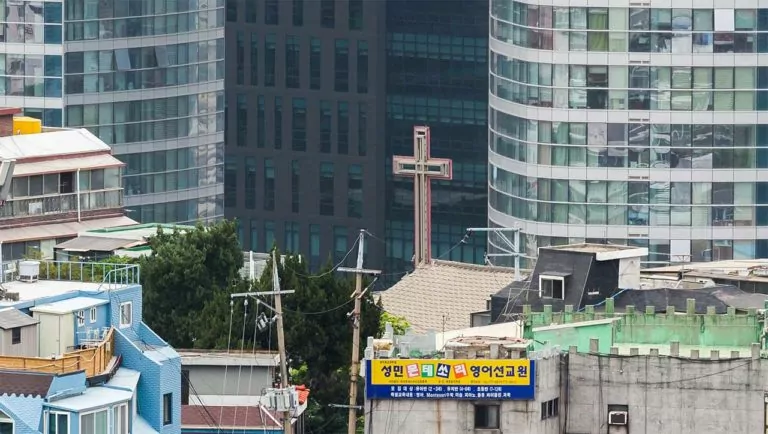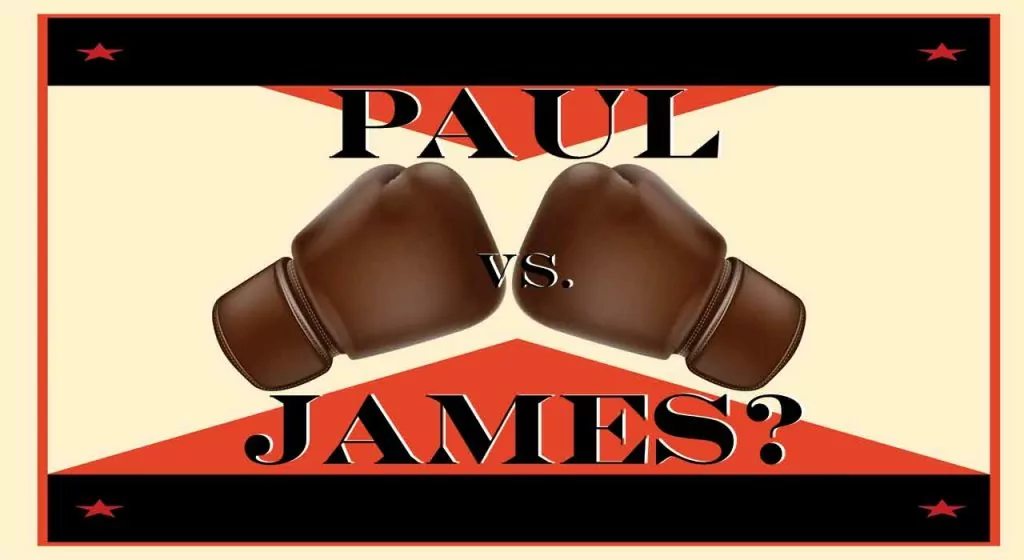The Korean Pentecost tells the remarkable story of Christianity in 20th century Korea
*****
Christianity is originally an Asian religion. It can seem strange to think of Christianity that way now because currently, Christianity has less presence in Asia than perhaps any other continent. That’s largely because Islam violently expunged most Christians from Asia hundreds of years ago.
However, in one part of Asia, Christianity has been growing since the beginning of the twentieth century. South Korea probably has the strongest presence of Protestant Christianity of any Asian country.
Yet life for Christians in Korea has not always been easy as is clear from its numerous martyrs during the twentieth century. Their sure confidence in God, even in the face of death, is an example to us.
1832 – Protestantism arrives in Korea
While there may have been a Roman Catholic presence in Korea from as early as the 1500s, it wasn’t until 1832 that the first Protestant missionary, a German, came to visit Korea. However, he was in the country only briefly. It wasn’t for thirty-three years before another Protestant missionary arrived.
In 1865, Rev. Robert Thomas, a Welshman, boarded an American ship, The General Sherman, to take gospel tracts and Bibles from China to Korea. However, many Koreans were suspicious and fearful of the intentions of those on that ship, and therefore set it on fire. As crewmembers swam ashore, the Koreans killed them. Rev. Thomas made it to shore with some of his Christian literature, but he was killed as well.
Years later, in 1893, American missionaries of the Methodist and Presbyterian churches established permanent residences in Pyongyang, Korea. The following year, as a result of the First Sino-Japanese War (1894-1895, in which China and Japan fought over the Korean Peninsula) Christians in that city fled into the countryside. They shared the gospel with others, and by the war’s end, many Koreans had become Christians. As missionary William Blair put it,
“God’s Spirit had been using those days of war and peril to make men welcome the message of his love and the comfort of the gospel.”
1901 – William Blair arrives
 The missionaries visited each new group of Christians. However, there were too few missionaries to keep up with all the work because of the large number of new converts. Additional help was requested from America. William Blair was a young missionary who responded to this call and went to Korea. He arrived in 1901 under the auspices of the Board of Foreign Missions of the Presbyterian Church in the U.S.A.
The missionaries visited each new group of Christians. However, there were too few missionaries to keep up with all the work because of the large number of new converts. Additional help was requested from America. William Blair was a young missionary who responded to this call and went to Korea. He arrived in 1901 under the auspices of the Board of Foreign Missions of the Presbyterian Church in the U.S.A.
Blair later put pen to paper to record his experiences in Korea, and is one of the two authors of the recently republished The Korean Pentecost and the Sufferings Which Followed. His first-hand account of what God did in those early years make up the first part of the book. (The second half, by his son-in-law Bruce Hunt, covers the period of Japanese persecution and then the post-World War II Communist persecution of the Christians in North Korea.)
Upon his arrival, Blair’s first task was to learn the Korean language. Then he began his missionary work in earnest.
Interestingly, he found that the fact that Jesus was not an American made Christianity more appealing to Koreans. In his words, “It makes a world of difference to an Oriental to know that Jesus was born in Asia.”
Blair and the other Presbyterian missionaries carried on their regular tasks of evangelism, Bible study, catechizing, baptizing, etc. year after year. The success of their efforts led them to set up an autonomous Korean Presbyterian Church in 1907. However, Korea was under Japanese occupation, and a strong anti-Japanese and anti-foreigner nationalism was taking hold in Korea. Even Korean Christians were caught up in this nationalism. Some of the anti-foreigner sentiment was directed towards the American missionaries by Korean Christians.
1907 – The Korean Revival
It was during this time of crisis that a large, days-long Bible study class for men was held in a Presbyterian church in Pyongyang, early in January 1907. American missionaries and Korean pastors took part in leading the meetings. About 1,500 men attended in the evenings.
On the second night of these meetings, Blair writes, “a sense of God’s nearness, impossible of description” was felt. A Korean pastor called upon the men to pray. According to Blair:
“As the prayer continued, a spirit of heaviness and sorrow for sin came down upon the audience. Over on one side, someone began to weep, and in a moment the whole audience was weeping.”
The following night was even more unusual. Early on, one of the Korean elders publicly confessed to the sin of personally hating William Blair. He then asked Blair to forgive him and to pray for him. As Blair began to pray,
“It seemed as if the roof was lifted from the building and the Spirit of God came down from heaven in a mighty avalanche of power upon us.”
Men throughout the meeting began to pray aloud, some lying prostrate on the floor, others standing with their arms outstretched towards Heaven. The missionaries had been praying for an outpouring of God’s Spirit upon the people and they realized their prayers were being answered. Many of those praying felt a need to publicly confess their sins and the missionaries gave them an opportunity to do so.
Public confession of sin
As Blair relates:
“Every sin a human being can commit was publicly confessed that night. Pale and trembling with emotion, in agony of mind and body, guilty souls, standing in the white light of that judgment, saw themselves as God saw them. Their sins rose up in all their vileness, till shame and grief and self-loathing took complete possession; pride was driven out, the face of men forgotten.”
This was an unusual way to conduct a meeting and Blair knew that. But he notes,
“We may have our theories of the desirability or undesirability of public confession of sin. I have had mine; but I know now that when the Spirit of God falls upon guilty souls, there will be confession, and no power on earth can stop it.”
After this series of meetings, the men returned home with a new enthusiasm and a special closeness to God.
“Everywhere the story was told the same Spirit flamed forth and spread till practically every church, not only in North Korea, but throughout the entire peninsula had received its share of the blessing.”
Those were exciting times for Christians in Korea. Unfortunately, as Bruce Hunt relates in his portion of The Korean Pentecost, severe hardship and persecution were just around the corner.
Japanese oppression
As mentioned, Korea was under Japanese occupation. The Japanese hated Christianity because they saw it as a threat to their authority. Some Christians were arrested and tortured.
The situation became worse shortly after the end of World War One. With President Woodrow Wilson advocating for the self-determination of small nations, many Koreans felt a need to speak out on behalf of their own country’s independence. Hunt writes:
“A Declaration of Independence was secretly drawn up and signed by thirty-three prominent leaders in Korea. Fifteen of the signers, including the Rev Kil Sunjoo, a nationally beloved evangelist and Bible teacher, were Christians.”
The Japanese reacted violently to that declaration, wounding and killing many Korean nationalists. Because Christians were prominent among the nationalist leaders, Christians in general were singled out by the Japanese for punishment. Many of them were killed.
A major conflict erupted over education. The Japanese authorities demanded that all schools be registered with the government and use government-approved curriculum. Religious – in other words, Christian – instruction was forbidden. Later, the Japanese partially relented and allowed some Christian instruction, but frequently the Christian teachers were not acceptable to Japanese authorities and therefore not allowed to teach.
Compulsory idolatry
Things got even worse when the authorities began requiring all teachers and students to regularly bow before Shinto shrines to demonstrate that they were loyal subjects. Shinto is a religion in which the Japanese Emperor is considered to be a deity. Bowing to a shrine shows loyalty and submission. This is analogous to Roman times when Christians were expected to offer incense to the Roman Emperor, who was also considered divine.
At first, Christians knew they could not participate in idolatry by bowing to the shrines. Gradually, however, compromise set in and some were able to rationalize the activity.
Eventually the Japanese decided they wanted all subjects to bow to Shinto shrines regularly. All public meetings, including Presbytery and General Assembly meetings of the Presbyterian Church, had to be opened with Shinto bowing. Many Christians broke under the strain and went along with this idolatry. The church became divided between a majority who compromised with Japanese demands and a minority who determined to remain faithful to God.
The Presbyterian General Assembly itself compromised and declared (under heavy government pressure) that shrine worship was not idolatry. As a result, faithful Christians withdrew from the Korean Presbyterian Church to worship separately. Hunt writes:
“Following the example of the Scottish Covenanters, a statement was drawn up, pointing out the biblical teaching on shrine worship and the necessity of breaking completely from those who condoned idolatry. From then on, no one was baptized who did not give consent to this document, and no one was allowed to lead services who had not subscribed to it.”
Those that remained faithful were persecuted, often imprisoned and even killed. According to Hunt, no one knows how many Christians were killed for refusing to participate in Shinto worship.
1939 – A courageous testimony in Japan
In 1939, Elder Pak Kwanjoon made an especially courageous testimony against Japan’s persecution of Korean Christians. He traveled to Japan with two other Christians to protest directly to the government. On March 21, all three went into the Japanese Parliament, which is known as the National Diet, with leaflets hidden in their clothing. They took places in the gallery above the four hundred Diet members.
When Pak gave the signal, all three threw their leaflets onto the members of the Diet. Hunt writes:
“Elder Pak’s leaflet urged the Japanese government to cease from its rebellion against God in forcing shrine worship on its people, lest the wrath of God fall upon the country. Pak’s leaflet
1) urged that Christianity be made the national religion of Japan, and
2) warned that if Japan continued to persecute Christianity, she would be destroyed”
It may be worth noting that six years later Japan surrendered to the Allies after being devastated by two atomic bombs. Could that be a fulfillment of Elder Pak’s words? He was arrested and sent back to Korea where he died in prison shortly before the end of WWII.
1945 – From the frying pan into the fire
Of course, with the end of World War Two in 1945, Korea was freed from Japanese oppression. Unfortunately, the Soviet Union occupied the northern part of the country and imposed Communism. Hunt notes that from the Communist perspective:
“Christianity was interpreted as a political crime, an act of vilest rebellion against the state, ‘the people,’ and therefore deserving of the severest punishment, even death.”
Korea’s northern Christians went from the frying pan into the fire.
Before the end of 1945, Christians in North Korea were being imprisoned. This was just the beginning, for as Hunt writes:
“After the Communists came into power in the northern half of Korea, thousands of Christians in that area, especially Christian ministers, church officers and leaders, were killed by them.”
The few remaining North Korean Christians continue to suffer persecution to this very day.
Conclusion
Christianity is commonly seen as a European or Western religion but that is not true. Most of the events in the Bible occurred in Asia or Africa, and Jesus Himself was an Asian. The “Holy Land” is in Asia, not Europe.
Currently, Christianity has little presence in most Asian countries. But since the late nineteenth century it has been growing successfully in Korea. The Korean Revival of 1907 is widely recognized as having had a great influence on the spread of Christianity in that nation. And the faithful testimony of Korean martyrs in the twentieth century should be better known in the West. The Korean Christians have suffered much for the faith but stood strong, assured that God remained with them. We can learn much from their example.
Dr. Michael Wagner is the author many, many books, and is a regular contributor to Reformed Perspective.












